During the final week of August 2013, my wife and I had the opportunity to travel to Hipodromo Camarero in Puerto Rico. I have always wanted to visit Camarero and was very excited to visit the track! I follow several horses who've raced there, such as Guerrilla Warfare who was in the money 16 of 23 starts. My co-workers and I also enjoy the race caller's excitement during Camarero races.
The weather was amazing all week and horse racing is year round in Puerto Rico. The infield was a beautiful pond with teaming wildlife and plant life. El Yunque national park, which is a tropical rainforest and mountain range, can be seen as a backdrop, and of course warm weather!
Horses were very approachable at the track. In fact, prior to one race, two different grooms brought horses over to a young boy of 5 to pet the horses while waiting in the indoor saddling paddock. There was a dividing wall, but that would not normally happen at other tracks. I was thinking how much that may have impacted that boys life, maybe he will be a fan or industry member for life.
The receiving barn is directly right of the grandstand and an open standing area that was open during the week days to public. The glass main grandstand was not available, at least I didn't try to find out. You could watch horses coming to the track from the stables, appear from behind the tote board and settle in at the receiving barn, then move from the receiving barn to the indoor saddling paddock underneath the grandstand. It is very compact, but so easy to scope out the competition.
At the track I met an individual who gave me an inside look at racing in Puerto Rico. I will not disclose his name, but appreciated his hospitality, transparent honesty, and the education he gave me. We will call him "A." A is a small time Puerto Rican trainer who has been around to sales and lower level claiming races/tracks most of his life, but who's home is in Puerto Rico for most of his life. He has played the claiming and sales game at larger tracks inside the continental United States.
A discussed the track life in Puerto Rico, explained changes that happened when the former U.S.-based owners sold Camarero to a group of Puerto Rican buisnessmen. There was discussion on the breeding, import and export of horses, and he talked about the role of Latin America in racing, Latin American trade, and the major race meets like the Clasico del Caribe (Carribean Classic Showcase). A had a lot of passion and desire to see the sport improve and grow in Puerto Rico, with larger field sizes, more fans, and more players at the tracks.
The following photos are organized in a few groups. The first group is a series of scenes providing a virtual tour, which are then followed by a dissection of the first race, and then other racing scenes. All photos by Adam & Erica Spradling.

Driving into the main entrance of the race track.

The front entrance to the race track facility.
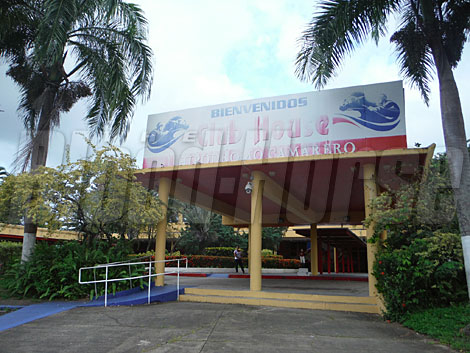
Standing in the first row of the parking lot, looking at the covered front entrance.

A giant banner to the left of the front turn-stall entrance. My head touched the top of the red swoosh, to give size conext.
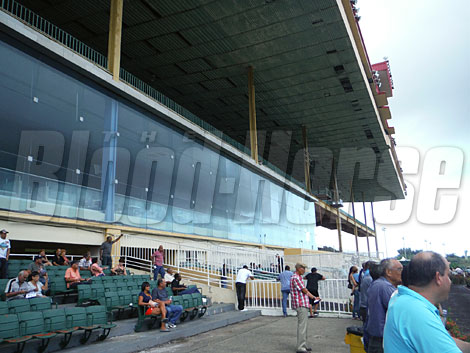
Looking back at the grandstand while standing next to the jockey paddock.
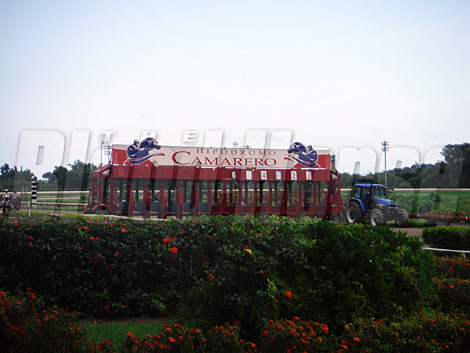
A tractor pulls one of two starting gates into position.
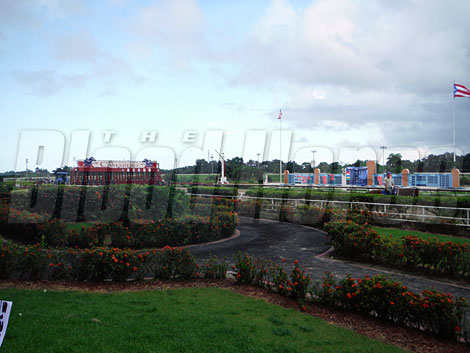
A view across the jockey paddock to the track and tote board from where the crowd stands.


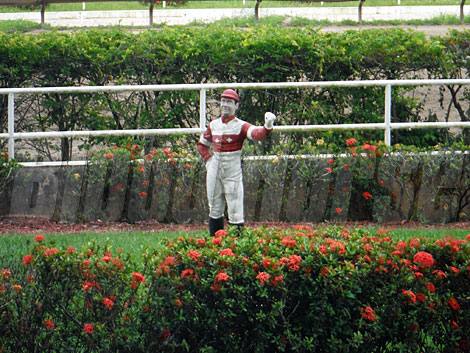

A Burst of Speed
After arriving at the track, the second race of the day was set to go off. Thus my wife and I ventured over to the saddling paddock to look at horses for race 3. The horse with the white blinkers is the horse I really liked, #3 Burst of Glory. My wife and I discussed who else looked like a winner and we settled on #1 Carifeo as well. Burst of Glory looked great, but as you scroll down and watch the replay, was three wide most of the race and moved a little too early and tired at the wire. The jockey also stood up before the wire, which I yelled about at the time, but the replay revealed that Burst of Glory wasn't going to hold off the pressure.


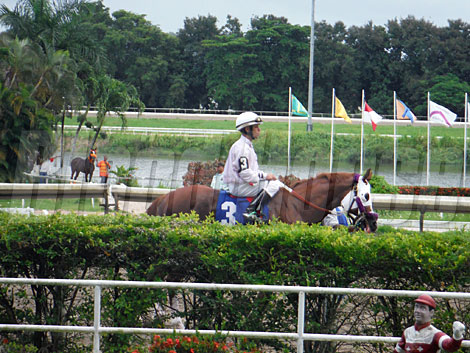
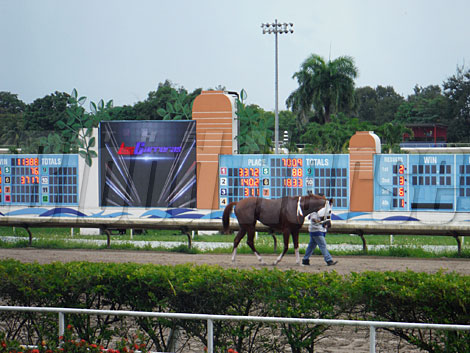
----
Burst of Glory Replay:

Horses are led across the track to the receiving barn from behind the tote board.

A horse for the next race leaves the receiving barn and heading to the saddling paddock.
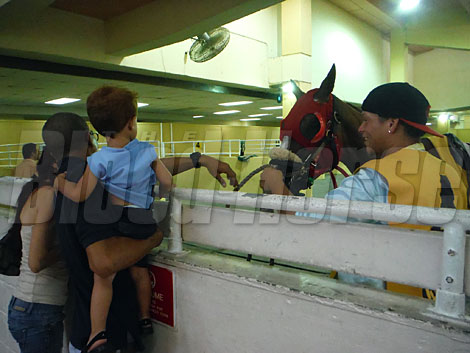
A groom brings a horse to greet a young patron.

The first try resulted in the young patron shying away, but a second horse and groom proved successful.
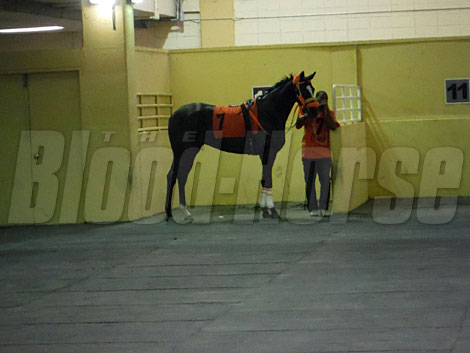

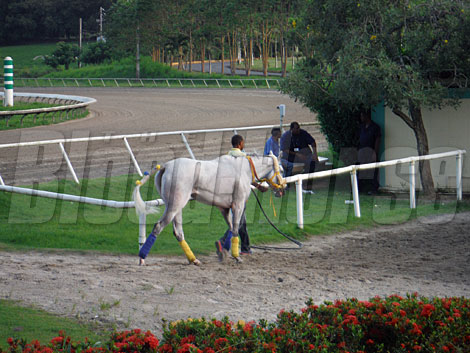
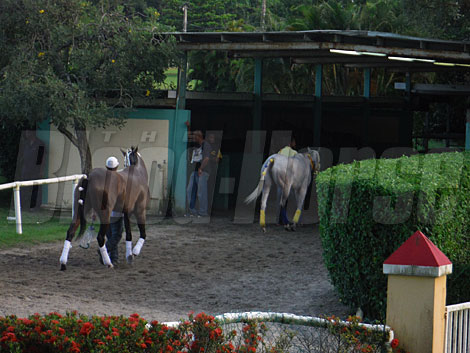
The receiving barn.

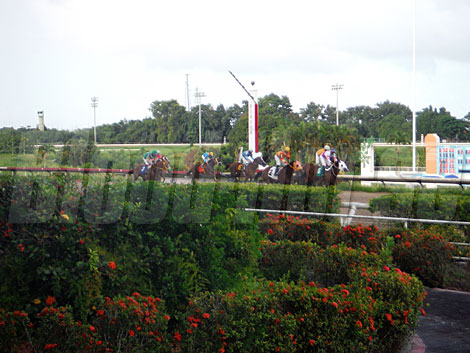
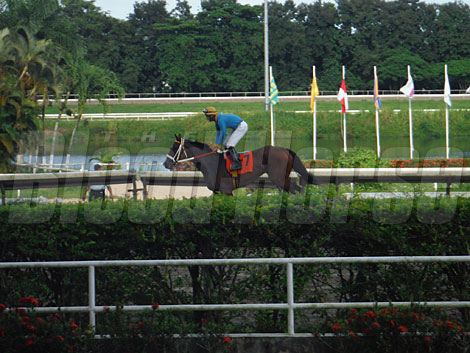
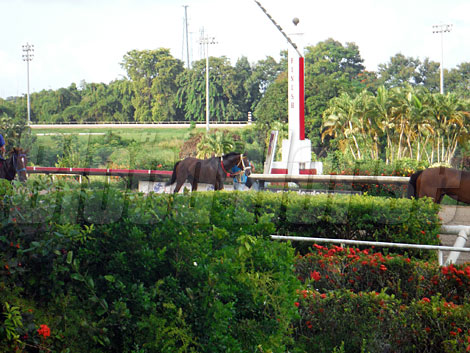
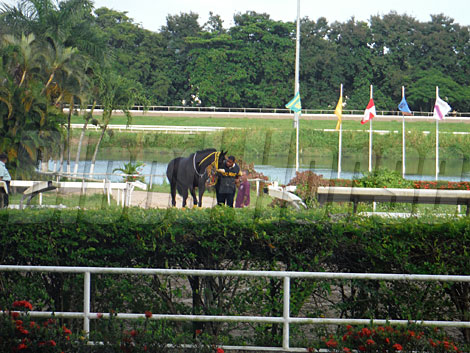
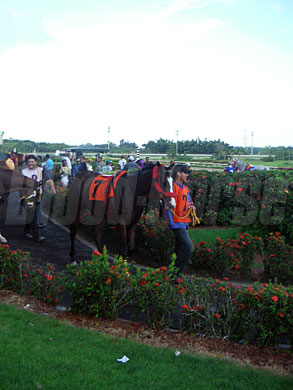
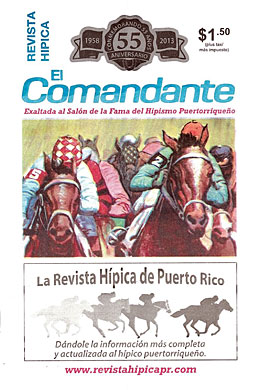
The Program.




